
- Home
- Photography Tours
- Diary / Blog
- Galleries
- Foreign Trips
- Tasmania 2016
- NE Queensland 2016
- Western Alps 2016
- NE Spain 2016
- Australia's Wet Tropics 2015
- Australia's Top End 2015
- SW Australia 2015
- Switzerland 2015
- Andalucia 2015
- Belize 2015
- Australia 2014
- Switzerland 2014
- Belize 2014
- Bahama Islands 2014
- Switzerland 2013
- Ecuador 2012-2013
- Florida 2011-2012
- Vancouver Island 2011
- Australia 2010
- Peru 2008
- Bulgaria 2007
- Lesvos 2006
- California 2006
- New Zealand 2005
- Extremadura 2005
- Goa, India 2004
- The Gambia 2003
- About
October 2014
9th-13th October 2014
MacDonnell Ranges, Northern Territory, Australia
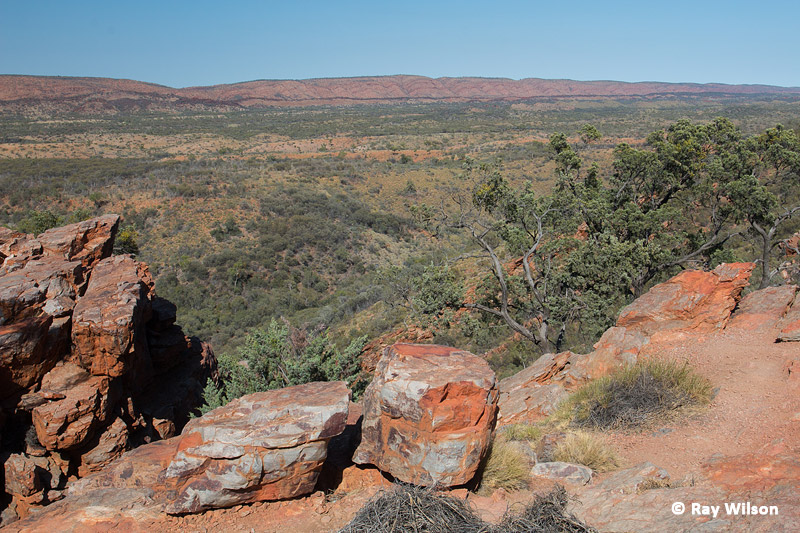
Spreading east and west from Alice Springs for a distance of around 300km in each direction, the parallel ridges of the MacDonnell Ranges rise dramatically from the otherwise flat plain of central Australia. Along the length of these escarpments, geological events and erosion has, through time, created numerous dramatic gorges and passes that possess supplies of permanent water, making it a haven for wildlife in an area where permanent surface water is an extremely rare commodity.
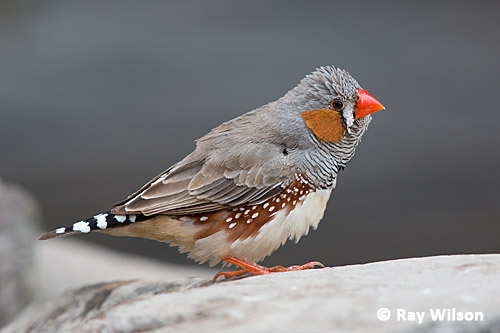
male Zebra Finch (Taeniopygia guttata castanotis)
In any desert area, the easiest way to see a cross-section of the wildlife is to quietly sit near a water source and wait for the birds and animals to come to you. During the heat of the day, when summer temperatures regularly soar to over 40°C (>100°F), a constant stream of Zebra Finches visit the waterholes to drink and bathe, often in large flocks comprising of more than 100 birds.
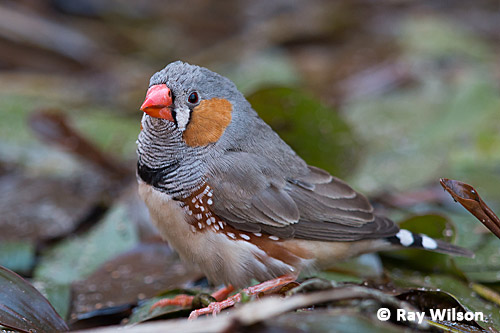
male Zebra Finch (Taeniopygia guttata castanotis)
Although they can survive for long periods without water, Zebra Finches are usually found not far from water sources and normally come down to drink several times a day.
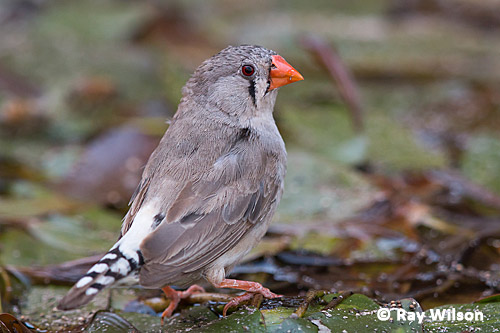
female Zebra Finch (Taeniopygia guttata castanotis)
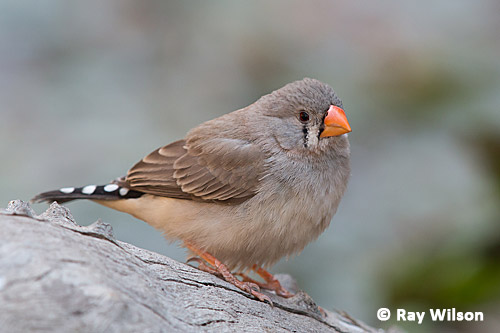
female Zebra Finch (Taeniopygia guttata castanotis)
Juvenile Zebra Finches are easily distinguished from the similar females by their bill colour.
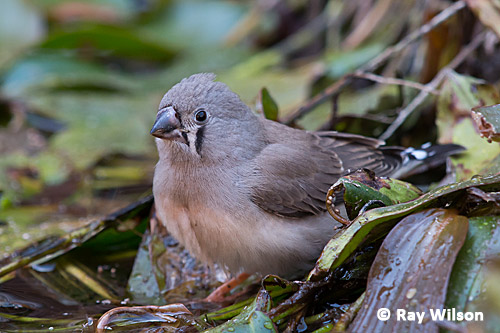
juvenile Zebra Finch (Taeniopygia guttata castanotis)

juvenile Zebra Finch (Taeniopygia guttata castanotis)
Although it is nowhere near as gregarious, abundant or as tame as the Zebra Finch, another Estrildid finch that frequents the water holes here is the Painted Finch.
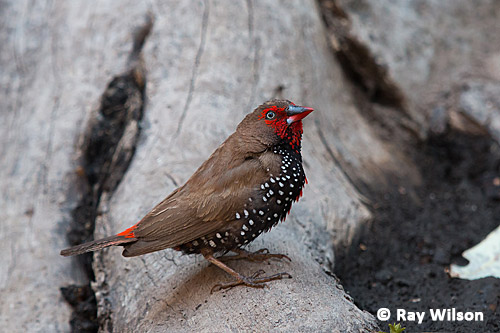
male Painted Finch (Emblema pictum)
Painted Finches usually come down to drink either singly or in small family groups and were very nervous and wary when at the water's edge.
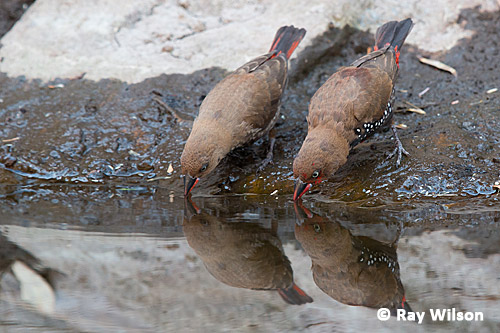
female & immature male Painted Finch (Emblema pictum)
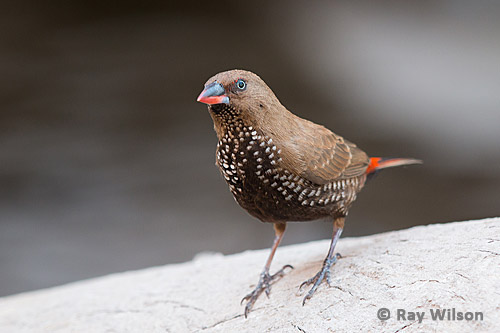
female Painted Finch (Emblema pictum)
Small flocks of Budgerigars comprising of up to 50 birds also regularly came down for a drink, although these were even more cautious than the Painted Finches and would flush at the slightest sound or movement.
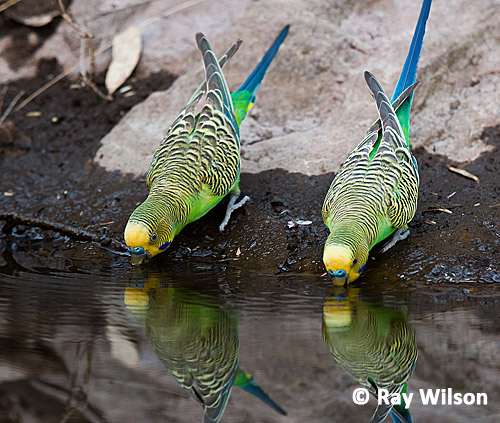
Budgerigar (Melopsittacus undulatus)
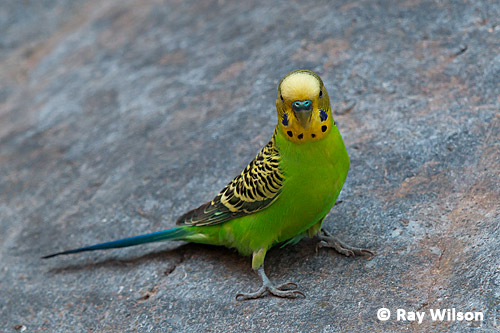
Budgerigar (Melopsittacus undulatus)
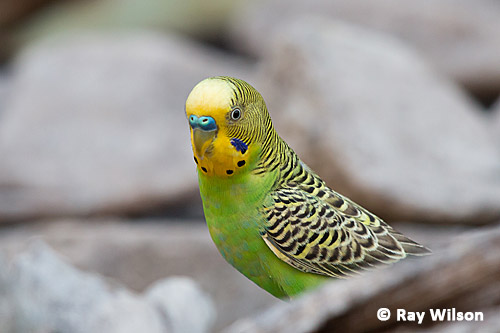
Budgerigar (Melopsittacus undulatus)
My hands-down favourite bird in central Australia has got to be the extremely charismatic Spinifex Pigeon. It's such a bizarre looking bird and I just love its flamboyant, punk-rock hairdo!

Spinifex Pigeon (Melopsittacus undulatus)
Spinifex Pigeons were reasonably regular visitors to the waterholes, seen at least once per day, but could also occasionally be seen wandering around the Ormiston Gorge campsite, scrounging for crumbs.
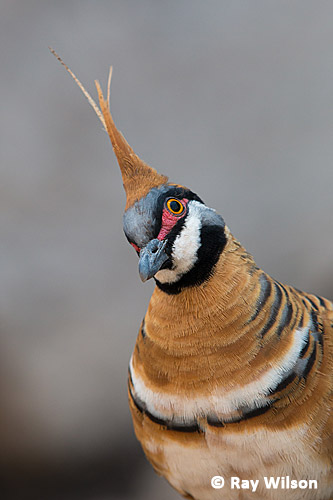
Spinifex Pigeon (Melopsittacus undulatus)
The tiny Diamond Dove, about the same size as a Budgie, is fairly common in the MacDonnell Ranges and Alice Springs area.
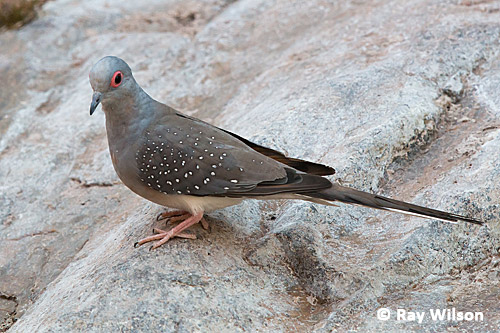
Diamond Dove (Geopelia cuneata)
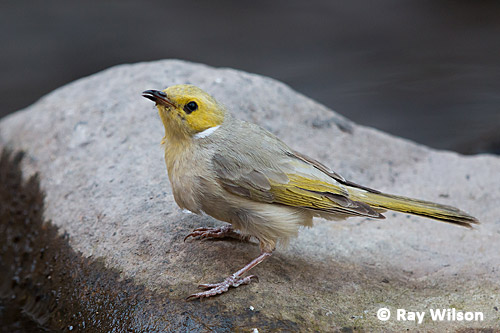
White-plumed Honeyeater (Lichenostomus penicillatus)
Honeyeaters get a large proportion of their water requirements from the nectar they drink and from their insect prey, but all the common species in the area still occasionally came down to the waterhole for a drink of water and to bathe.
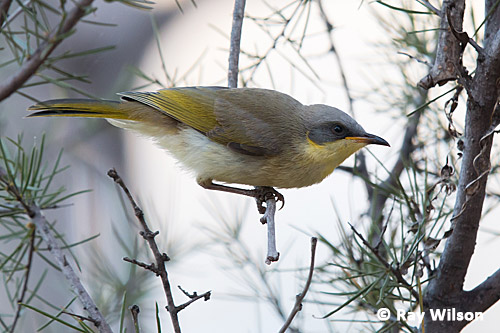
Grey-headed Honeyeater (Lichenostomus keartlandi)
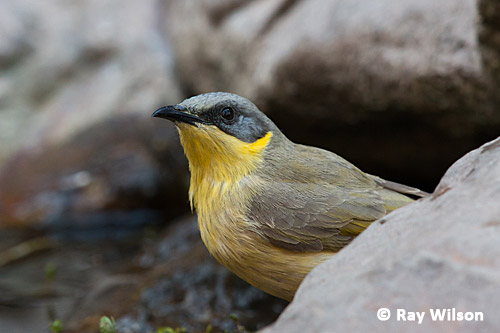
Grey-headed Honeyeater (Lichenostomus keartlandi)
Despite their name and their propensity for drinking the nectar from flowers, most species of honeyeaters get the majority of their dietary requirements from eating invertebrate prey, as demonstrated by the Singing Honeyeater below with a captured dragonfly.
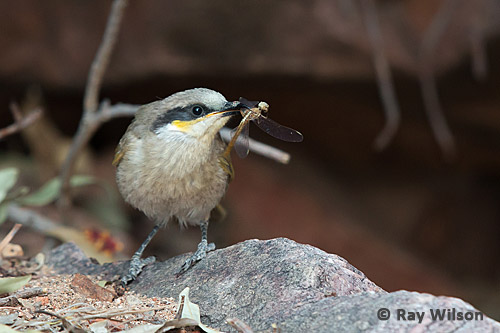
Singing Honeyeater (Lichenostomus virescens)
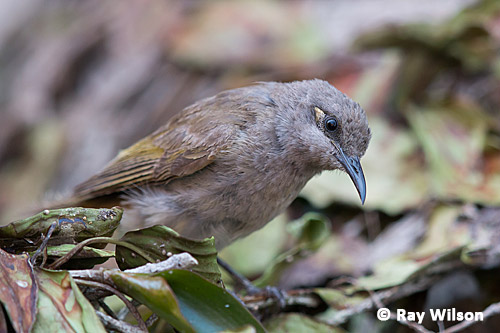
Brown Honeyeater (Lichmera indistincta)
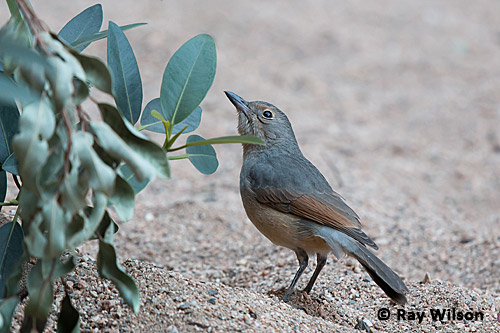
immature Grey Shrike-thrush (Colluricincla harmonica)
The Black-footed Wallaby has undergone a dramatic decline in the MacDonnell Ranges since the 1930's but this shy species can still be seen fairly easily (if you are up early enough!) at a couple of places.

Black-footed Rock-Wallaby (Petrogale lateralis)
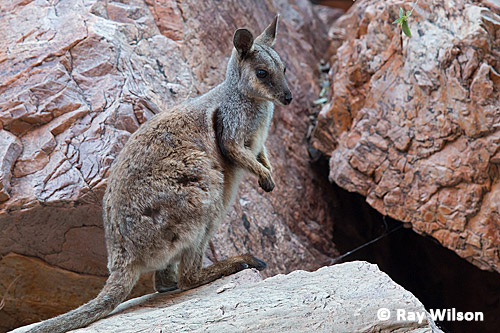
Black-footed Rock-Wallaby (Petrogale lateralis)
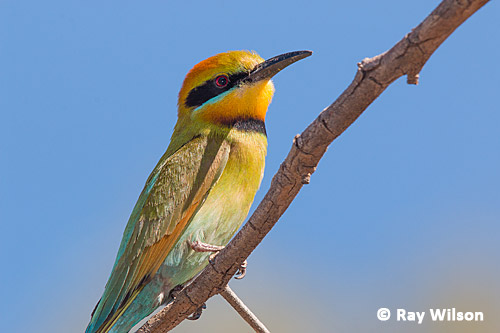
Rainbow Bee-eater (Merops ornatus)
A couple of species that it is highly unlikely to find visiting the waterholes are Dusky Grasswren and Spinifexbird. Both of these are skulking species that are difficult to see but, with a bit of effort, they can usually be tracked down if you spend enough time in suitable habitat.
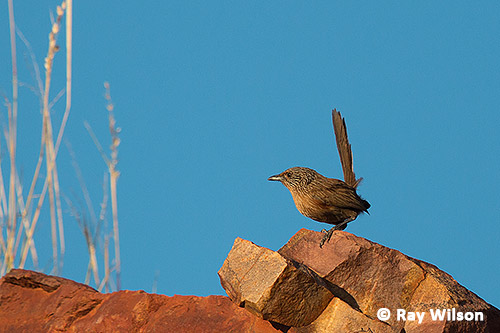
Dusky Grasswren (Amytornis purnelli)
Grasswrens are a notoriously difficult group of birds to find due to their secretive nature and tendency to remain hidden in very dense vegetation. Dusky Grasswren, however, is probably the easiest of the group to observe and on several occasions I saw them briefly perching out in the open on rocks adjacent to dense cover.

typical Dusky Grasswren habitat
Spinifexbird has very specific habitat requirements so, despite them being fairly widespread and reasonably common, they do tend to be extremely localised. Volume 13 of the Handbook of the Birds of the World (del Hoyo et al.) states Spinifexbirds are usually found in areas where there is abundant mature spinifex grass, "particularly where old large hummocks of spinifex become mixed with acacia scrub along small watercourses in the rocky foothills of upland desert country"...and that is precisely where I found, and photographed, the individual below...
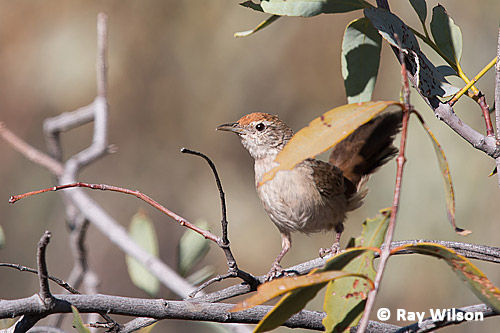
Spinifexbird (Eremiornis carteri)
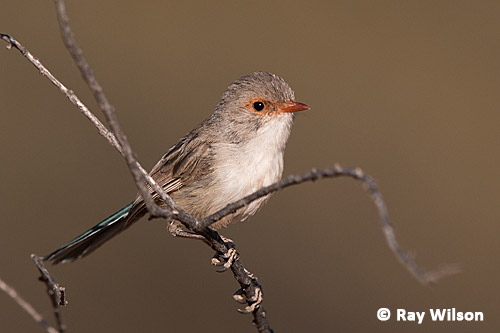
female/immature male Splendid Fairywren (Malurus splendens)

Yellow-rumped Thornbill (Acanthiza chrysorrhoa)
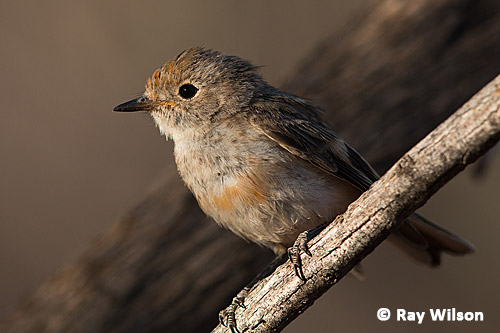
immature male Red-capped Robin (Petroica goodenovii)
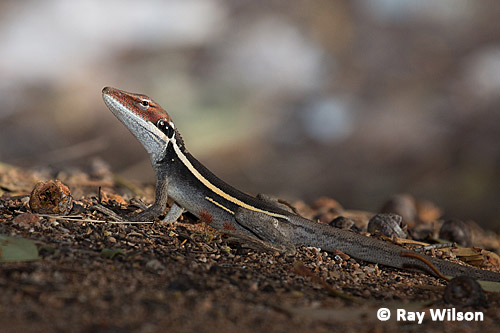
Long-nosed Dragon (Amphibolurus longirostris)
Long-nosed Dragons were frequently encountered along the Eucalyptus-lined, dry watercourses, either basking in the trees or scurying along the ground as they actively hunted for their invertebrate prey, such as the beautifully camouflaged grasshopper shown below.
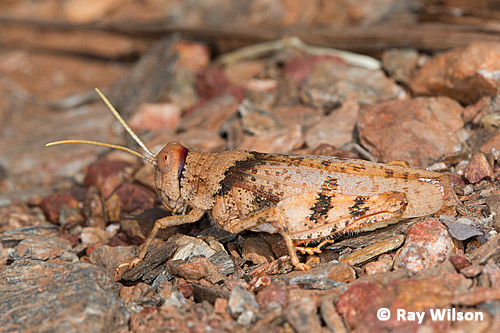
Grasshopper sp.
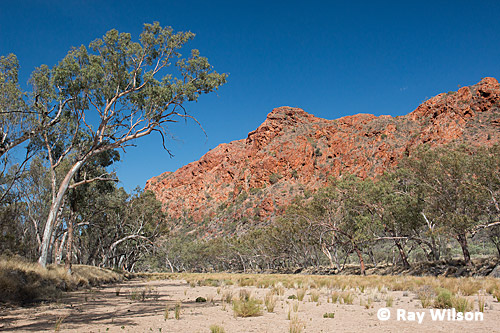
The dry riverbed Trephina Creek in the Eastern MacDonnell Ranges

Ray Wilson owns the copyright of all images on this site.
They may not be used or copied in any form without prior written permission.
raywilsonphotography@googlemail.com